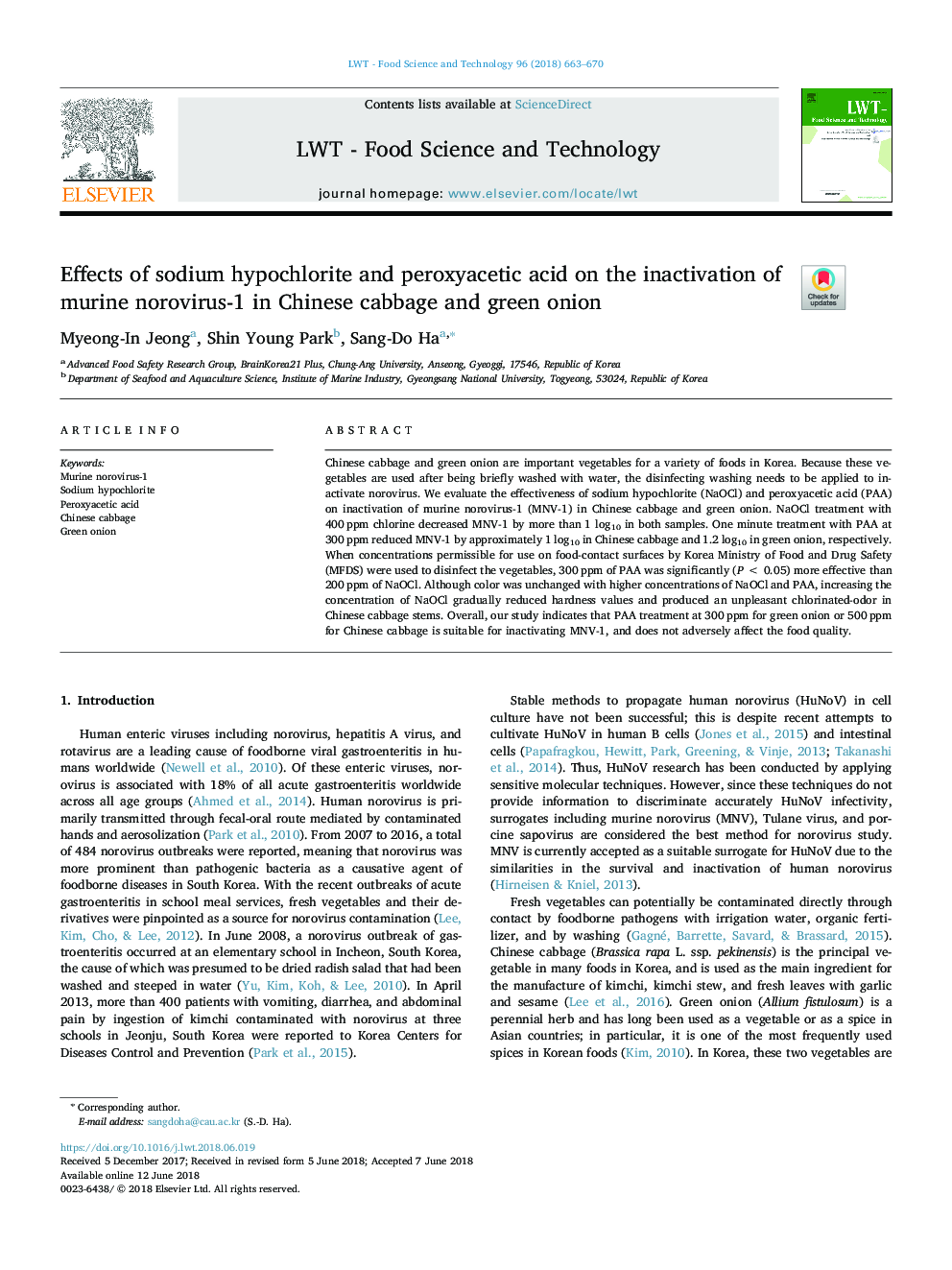| Article ID | Journal | Published Year | Pages | File Type |
|---|---|---|---|---|
| 8890736 | LWT - Food Science and Technology | 2018 | 8 Pages |
Abstract
Chinese cabbage and green onion are important vegetables for a variety of foods in Korea. Because these vegetables are used after being briefly washed with water, the disinfecting washing needs to be applied to inactivate norovirus. We evaluate the effectiveness of sodium hypochlorite (NaOCl) and peroxyacetic acid (PAA) on inactivation of murine norovirus-1 (MNV-1) in Chinese cabbage and green onion. NaOCl treatment with 400â¯ppm chlorine decreased MNV-1 by more than 1 log10 in both samples. One minute treatment with PAA at 300â¯ppm reduced MNV-1 by approximately 1 log10 in Chinese cabbage and 1.2 log10 in green onion, respectively. When concentrations permissible for use on food-contact surfaces by Korea Ministry of Food and Drug Safety (MFDS) were used to disinfect the vegetables, 300â¯ppm of PAA was significantly (Pâ¯<â¯0.05) more effective than 200â¯ppm of NaOCl. Although color was unchanged with higher concentrations of NaOCl and PAA, increasing the concentration of NaOCl gradually reduced hardness values and produced an unpleasant chlorinated-odor in Chinese cabbage stems. Overall, our study indicates that PAA treatment at 300â¯ppm for green onion or 500â¯ppm for Chinese cabbage is suitable for inactivating MNV-1, and does not adversely affect the food quality.
Related Topics
Life Sciences
Agricultural and Biological Sciences
Food Science
Authors
Myeong-In Jeong, Shin Young Park, Sang-Do Ha,
